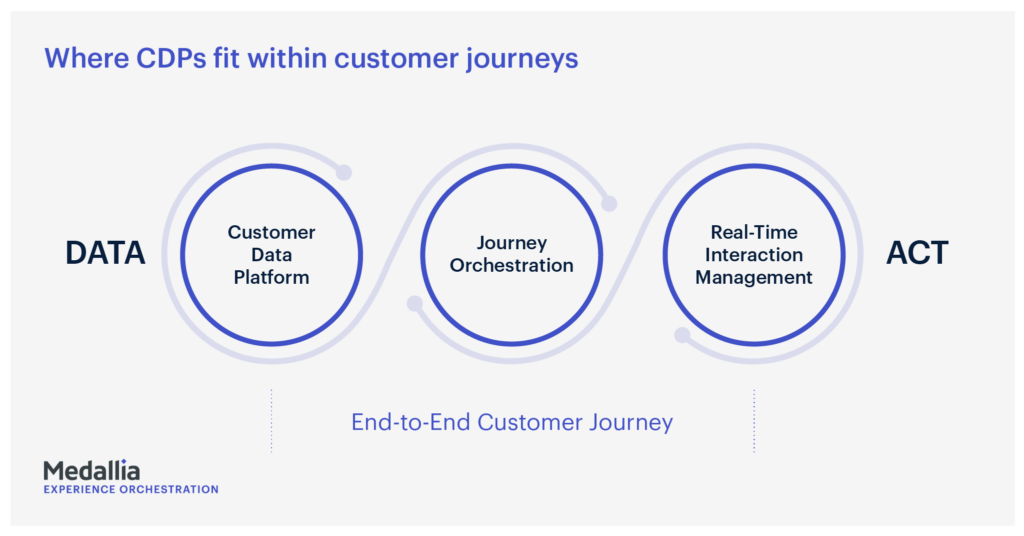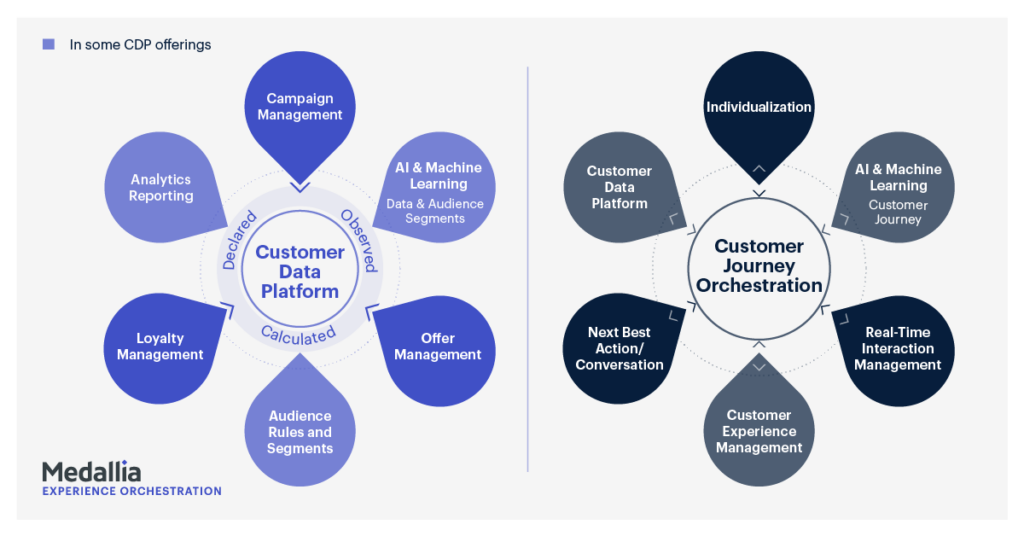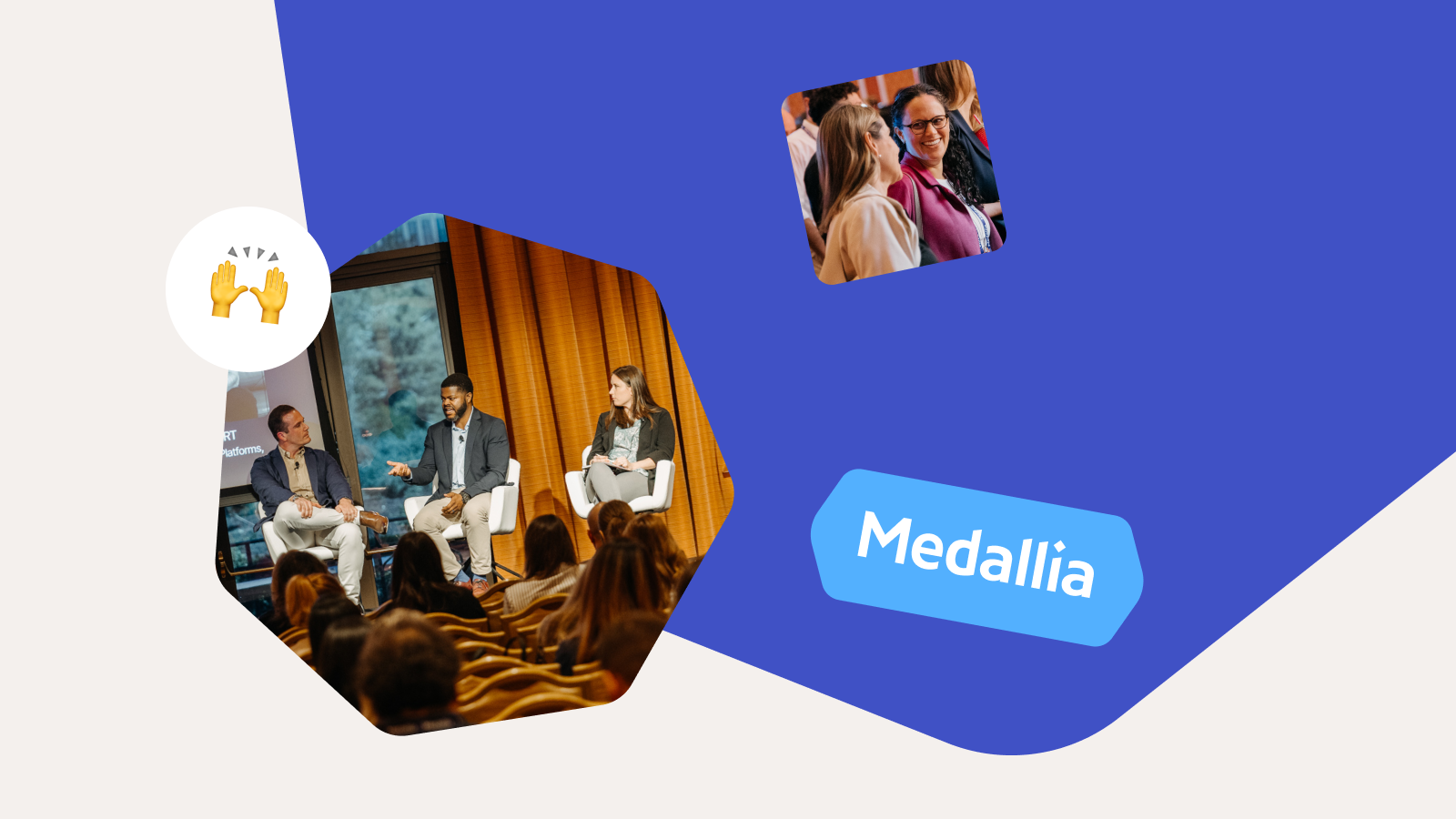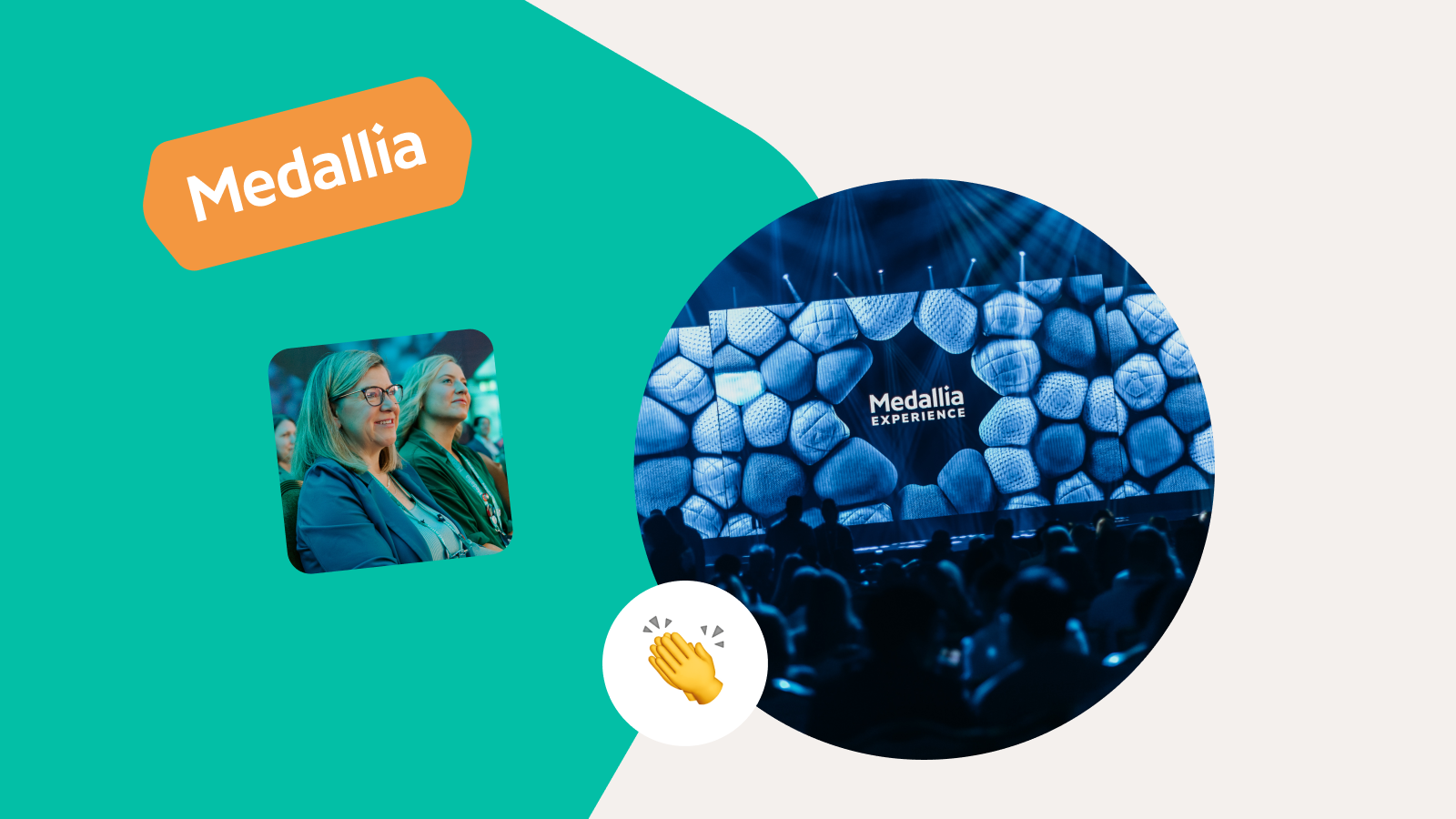Customer Data Platforms: What Are They, and How Can They Help?
December 7, 2021
Customer Experience
We explore what Customer Data Platforms are, their benefits and limitations, and how they fit within customer journeys.
Most brands today are quick to claim a customer-centric mindset. But, on closer inspection, many businesses tend to be collecting data from their customers without context, meaning that they are serving generic experiences through traditional segmentation. Their platforms are then unable to act on customer-led behavior, simply because they don’t have the ability to “action” the insights they collect across channels at speed, in the moment it’s needed. So, in a customer-centric world, organizations seek solutions for these challenges, which sometimes arrive in the form of a Customer Data Platform.
What is a Customer Data Platform?
A Customer Data Platform (mostly known by its abbreviated form, CDP) is designed to be a centralized, single source for a customer profile. CDPs promise to address brands’ needs for consolidating their customer data across channels and touchpoints, for more effective and connected analysis and communication.
The concept of a CDP is not a new one — some say it’s a natural evolution of the Single Customer View (SCV). Nonetheless, with the increased desire by brands to embrace customer-centricity and transform how they engage with their customers, there has recently been a marked interest in the space.
Navigating the world of CDPs can seem overwhelming, since there are many options available. Furthermore, no two CDPs were created from the same roots or provide identical offerings; the differences between companies that now position themselves as a ‘CDP’ is vast. Some hail from tag managers; others started as Data Management Platforms (DMPs) – and marketing clouds are also redefining themselves. Gartner classifies four types of CDPs: Marketing Cloud CDP, Smart Hub CDP, Marketing Data and Integration CDP, and finally, Engines and Toolkit CDP. No surprise then that there is even a CDP Institute, which exists “to explain the CDP category to potential users, technology companies, media, and others.”
Why do I need a CDP?
Since the shift to customer-centricity has gained significant momentum in recent years, this question is an increasingly common one. CDPs are promoting their solution to help solve the fundamental issue brands have: a broken customer experience, leading to poor engagement. After all, many large organizations are figuring out how to connect their channels to ensure customers get a consistent, valuable, and unique experience. Their predicament has often arisen because the organization evolved its tech stack over time; at each point, new technologies have created data silos. So theoretically, creating a single user profile will help solve this engagement gap.
What are the benefits of a CDP?
As mentioned previously, Customer Data Platforms provide varying capabilities, depending on how they were built (usually based on the company’s legacy) and their level of competency.
On paper, the benefits of a CDP are:
- Extending campaign reach and creating cross-channel marketing segments for targeting
- The creation of the famous ‘single customer view’
- Help with planning and building campaign journeys for marketing systems
- Providing connected data sets for campaign insights across marketing channels
- Bringing organizational silos together to create a customer data strategy
- Tools to help manage data security and compliance
What are the challenges with CDPs?
CDPs are decent platforms for connecting customer data but they do have limitations, particularly for those seeking a solution to the bigger issue of omnichannel customer engagement. Critically, they are unable to address end-to-end customer experiences (across a lifetime) or create an holistic view of each customer.
With differing data requirements and legacy technologies, many organizations face an uphill struggle in getting their divisions – marketing, IT, sales, corporate, customer service, and logistics – to agree on the needs and objectives of a new and coordinated data management. But although a Customer Data Platform draws together different types of data (including transactional and behavioral) from multiple sources and creates audience “segments,” it can only deliver high-level insights through marketing automation. While capable in data collection, the systems are generally designed to support marketing efforts, as opposed to cross-division objectives. This then means CDPs only tend to represent a solution for marketing engagement (marketers are the main buyers of this technology).
The segmented approach also leads to limited insights on the end-to-end customer journey, considering interaction across channels and time. This is achieved at a segment, rather than an individual level – a missed opportunity for brands seeking one-to-one engagement.
Engagement requires action. But CDPs lack the ability to act on audience and customer behavioral data, in the moment, laddering up to create an individualized experience over time. Customer Data Platforms essentially provide the first step in the process: collecting data in a data warehouse. But one of the misunderstandings we have seen over recent years is that RFIs often assume CDPs are capable of orchestration; typically, the software has no (or highly limited) decisioning or orchestration capabilities. So, while it can bring the data together, it won’t be able to provide a business with the ability to do something about it (helping the customer in real time), when it matters. And it can’t act on data collected to serve unique experiences to customers based on their individual motives. The technology is generally unable to predict what will happen next, meaning a separate next best action layer will also need to be employed. Without the ability to see events in the round or inform decision making, they don’t have a full view of the actual customer journey through the lens of the customer.
All of this means that while they can consolidate and give a fairly comprehensive view of customers’ data, CDPs fall short of providing omnichannel engagement.
Do I need a CDP to solve the customer engagement gap?
CDPs do a good job of creating a single user profile. But to provide omnichannel, customer-led journeys (critical for engagement) journey context and decisioning need to be understood and mobilized. It’s worth considering whether a given CDP can deliver (most struggle).
As part of a bigger offering, CDPs can serve a useful role – the simplified diagram below represents this. Customer Journey Orchestration and Real-Time Interaction Management (RTIM) provide journey-based analysis and context, across all customer interactions and over all time. And they can do this very well, working with the output of CDPs.

What is a Journey Orchestration Platform?
Customer Journey Orchestration allows brands to listen across every channel and touchpoint over time, to understand what is important and instantly determine the next best conversation. This fulfills the “action” part of the process, where the data and insights collected from unified customer profiles can be used to trigger unique journeys and build engagement for every customer.
A Customer Journey Orchestration Platform has fundamental components:
- Journey Analytics (Insights and intelligence on the customer journey): Data collection across multiple touchpoints and channels; visioning, including data fusion, journey design and planning, and journey testing and optimization.
- Real-time Interaction Management (decision-making): RTIM allows brands to engage with customers in the moment, at every touchpoint.
- Journey Orchestration (action): The implementation of customer-led journeys, based on customer intent and using all available context.
What are the differences between a CDP and a Journey Orchestration Platform?
- Contributor vs. Hub: CDPs mainly feed other systems, so they can be vague and open-ended. In contrast, Journey Orchestration has a specific purpose as a centralized engagement hub for all customer touchpoints.
- Ownership: CDPs tend to be marketer managed, while Journey Orchestration, done right, should be cross-departmental in order to support the omnichannel customer journey.
- Data focus: CDPs collect first-party data and use traditional segmentation to group likeminded customers. Journey Orchestration is different; while it primarily works with first-party data, it isn’t limited to it. The latter extends beyond traditional segmentation to include audiences based on behavior and context.
- Data subject: CDPs are based on customer data that has already been collected, whereas Journey Orchestration Platforms can use data points on customers, prospects, and anyone of interest based on continuous learning – often powered by AI.
- Orchestration: Despite claims, CDPs do not generally orchestrate and are geared towards message delivery. Journey Orchestration provides ‘decision-based orchestration’ in real time, determined by all available context and intelligence-based predictions, for the good of the customer.
- Measurement of success: CDPs are typically measured by their use of data (and how available it is), whereas Journey Orchestration is measured on the success of orchestration and contribution to specific, holistic customer satisfaction and broader strategic business metrics. This drives engagement and lifetime customer value.

To CDP – or not to CDP?
That is the question. And it’s an increasingly common one.
Before embarking on any new technology like this, it’s always useful to consider what a business needs and what gaps exist. Will gathering data help, or will we be continuously adopting new technology and playing catch up with future emerging tech platforms?
Having a chunky goal to work towards will help an organization decide what technology investments should be prioritized, and ultimately how it might need to re-organize resources to become genuinely customer-centric.
Customer Data Platforms may fix an internal customer data problem and can provide a joined-up view of customer data. So, if better segmentation capabilities are priorities (albeit with a marketing bent), the tech can be useful. But they have no view of journeys (the best lens of the customer), so they can’t discover or understand them, or take effective action at the right time to help people achieve their goals. Therefore, if engagement and lifetime customer value are key objectives, a CDP won’t cut it – at least, not alone. It’s worth noting that as soon as there’s a need to glean deeper insights – or use these to inform omnichannel experiences for every individual customer, you’ll probably want to consider a Journey Orchestration Platform.








